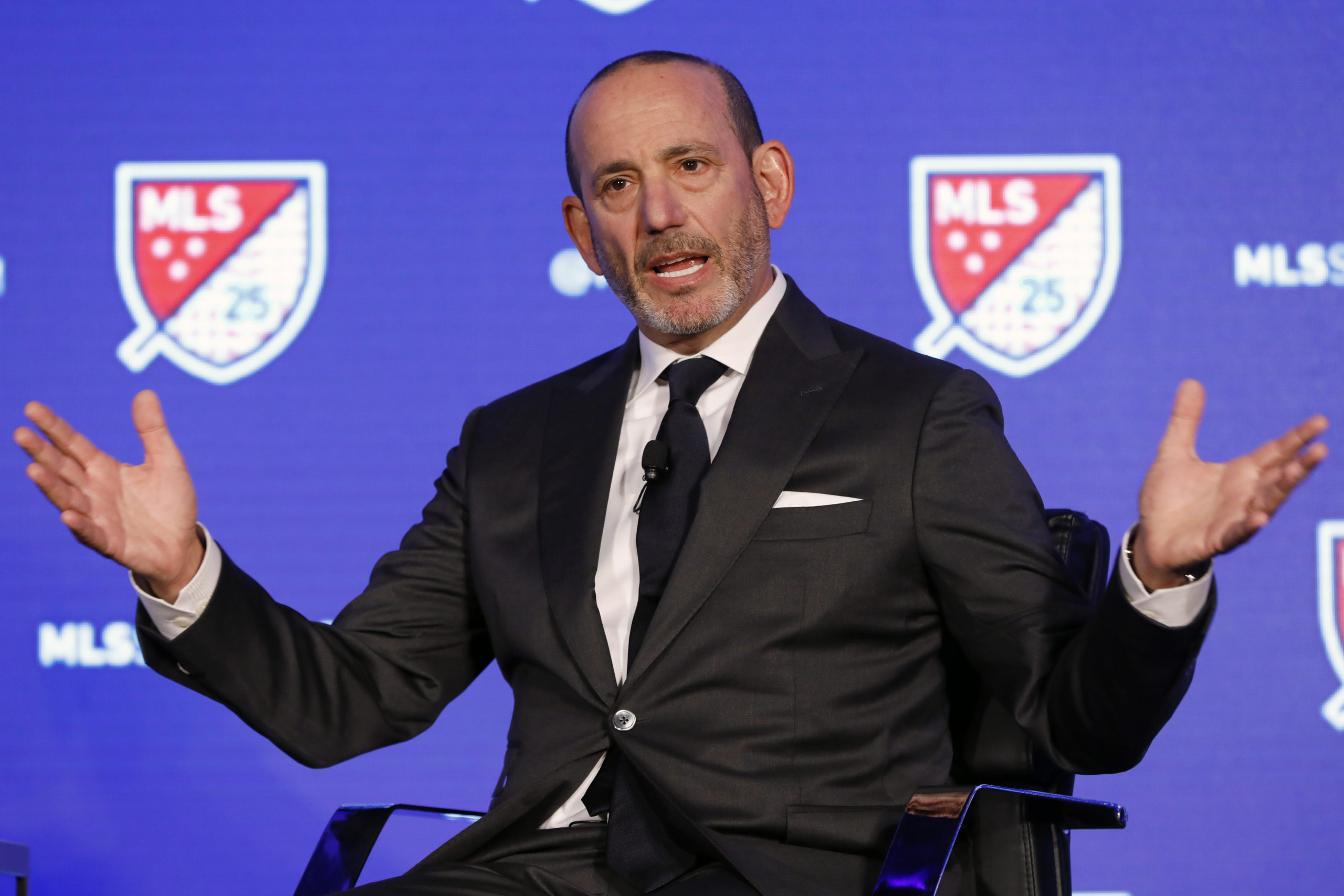Major League Soccer coaches welcome the chance to use five substitutes when play resumes in Florida next month, out of concern for both the conditioning of the players and the demands of summer heat.
The adoption of the rule and the expansion of game-day rosters are especially important given the relatively short preparation teams have had for the MLS Is Back Tournament, which starts July 8 at the sports complex at Walt Disney World.
Teams were able to go to full training on June 4, provided local jurisdictions approved. But some teams in states or communities with more strict stay-at-home orders were already behind in returning to practice.
Also a factor is the heat and humidity in the Orlando area, and the different start times in place — early morning and night games — to offset the weather’s impact.
The heat, combined with limited training, can mean that players are more susceptible to injury.
“I think you’re just going to have to, at times, be prepared to use a full complement of your roster,” Sporting Kansas City coach Peter Vermes said. “And especially depending on how your games are coming, because you may have a game at 8 o’clock at night and the next game might be at 9 a.m.
“So, again, those time differences are going to be a big change, too. We’ll have to function and make solutions for that. Having the full complement of your roster — the great thing is that we’ll have access to it. Now, it’s just a matter of keeping the guys healthy.”
The International Football Association Board, which sets soccer’s rules, agreed to let teams globally use two extra substitutes per match for the remainder of the year because of the coronavirus pandemic. FIFA had requested the change because schedules will likely be more congested as teams try to make up for lost time.
“Matches may be played in a condensed period in different weather conditions, both of which could have impacts on player welfare,” IFAB said of the temporary rule.
The German Bundesliga, the first major international league to return to play, was the first to use the new rule. The Premier League, which resumed play this week, also allows for five subs.
The rule allows teams to make five changes in a 90-minute game, and a sixth in extra time. Teams can stop play only three times during the 90 minutes to make changes. The rule is in place until Dec. 31.
MLS teams will also be allowed to expand game-day rosters to 23 players.
Nashville coach Gary Smith said stopping play just three times should help maintain the flow of games.
“If you’ve got five substitutions, it’s not going to be very enjoyable for the viewer to see constant changes that just disrupt the flow of the game. So the three breaks in the game and five substitutions make a lot of sense,” Smith said.
But some said five substitutes can be too many.
“When you change five guys, it could take the team from being in sync to just completely out of sync. And I believe that will be something that ought to be really calculated and measured as a staff when we make those decisions,” Vermes said. “But some of the (subs) may just be forced upon us because guys physically just may not be able to function.”
New Chicago Fire coach Raphael Wicky said the games will dictate his decisions.
“I think it will depend on the physical status of the players. If you feel like, ‘OK, this is the first game, it’s very hard. I feel like there’s four guys on the field who after 60 minutes, they’re like really dropping.’ Then you probably will have to use these subs,” Wicky said.
“If you feel that the team is ready, the players feel good, that they have energy level, sometimes the coach doesn’t really want to make five subs. Because bringing in five new players, it’s not that they’re not good players, they’re probably very good players, but sometimes a team works, team chemistry’s there, the tactics work. … So it’s very tricky.”
Coaches also said an unintended consequence may be that younger players would get more experience than during regular-season play.
Orlando coach Oscar Pareja said any policy that is in the best interest of the players is a good one.
“I think it’s a mystery for players or coaches that haven’t experienced that model, maybe here with colleges it has happened before and they’re used to it,” he said. “But for us, it’s fine. I think in terms of the health of the players, it’s good. I like it.”



